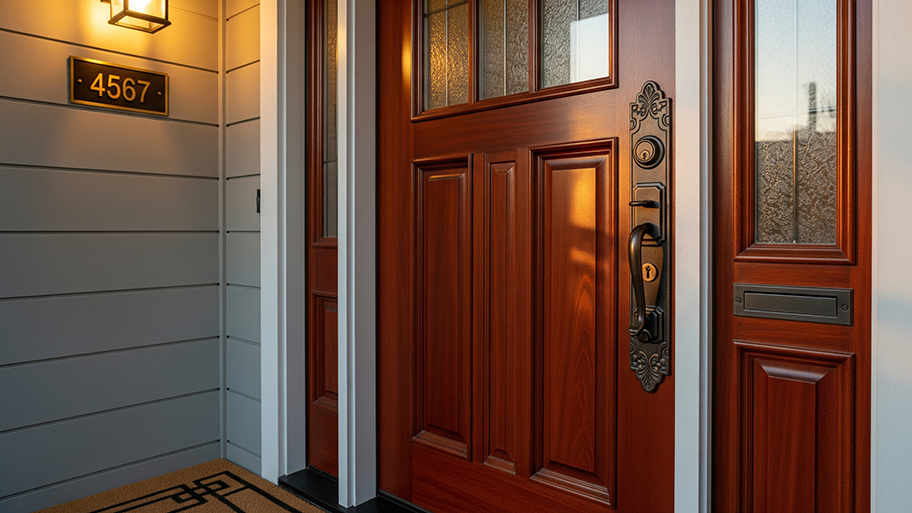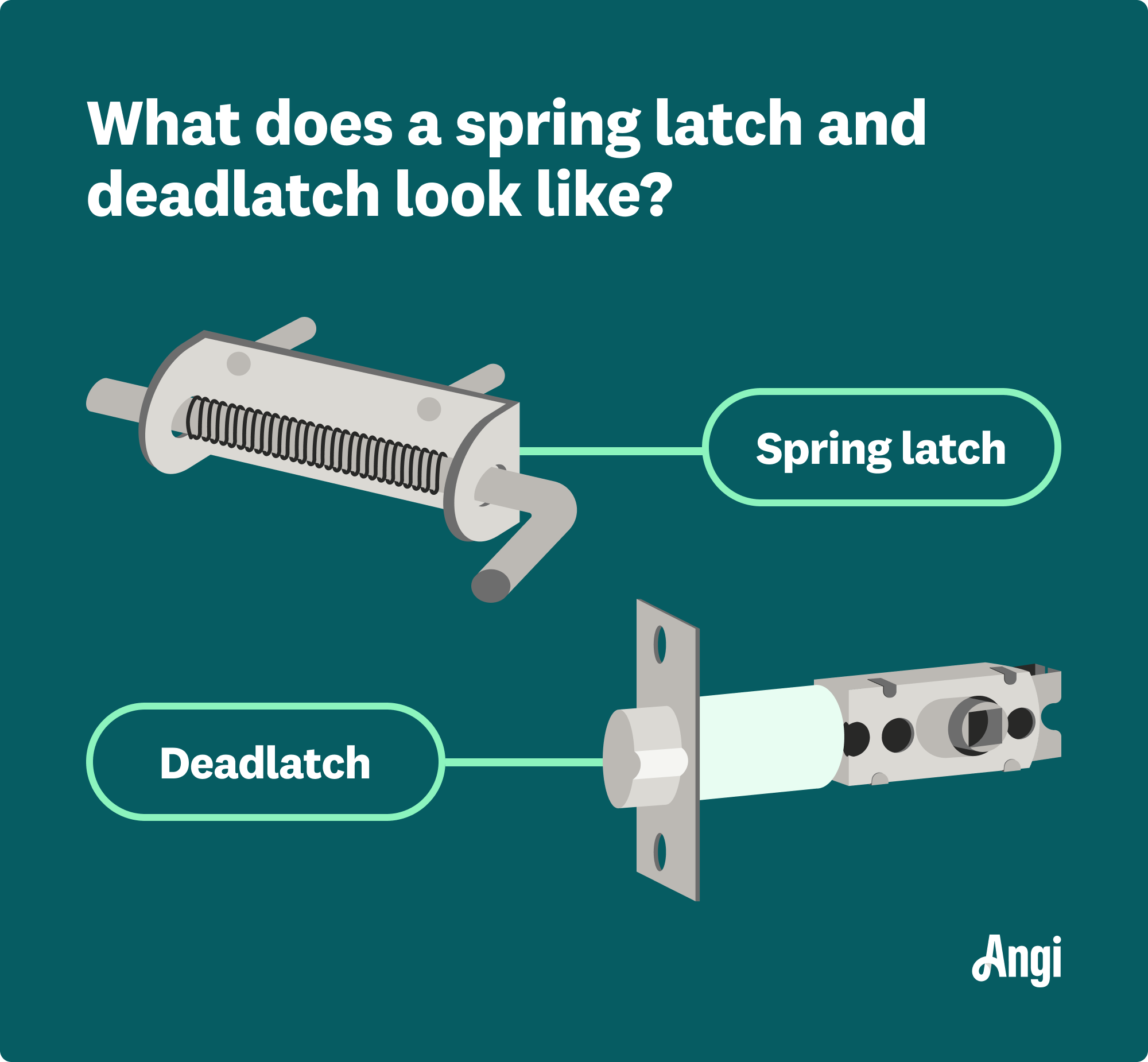
Wondering how much a locksmith costs? Discover locksmith prices, key cost factors, and tips to save on home lockout, rekeying, and installation services.
A deadlatch offers an extra layer of protection for exterior doors


A deadlatch is a type of door lock that secures automatically when the door is closed.
The difference between a deadbolt and a deadlatch is that you need a key to lock a deadbolt. A deadlatch locks itself automatically.
You’ll need a key to release the plunger and allow the deadlatch to unlock again.
If your door has a deadlatch that isn’t working, look at the door jamb to make sure the strike plate is aligned properly. You may need to detach and readjust it.
Whether you’re looking for ways to beef up your home security or just want to know what that second lock on your front door is called, you’ve come to the right place.
A deadlatch is a type of door lock that locks automatically without having to turn a knob or use a key. It rests against a metal strike plate mounted on a door frame. The deadlatch works by using a bolt to block the door from opening, giving your door extra security. There are three types of deadlatch modes:
Passage - latch is open, allowing the door to open and close
Safety - automatically locks when the door is closed
Secure - lock can only be opened from the inside or outside
A deadlatch plunger is a crucial piece of the deadlatch lock. When you close the door, the plunger keeps the lock from retracting when pushed or under pressure. This prevents the door from being opened from the outside. To unlock, pressure is applied to the plunger, retracting the lach, and opening the door.
The main difference between a deadlatch and a deadbolt is that you use a key to lock a regular deadbolt from either side. When using a deadlatch, the lock falls into place once you close the door—no key necessary. If you have a deadlatch, you can leave the house without worrying whether you locked the front door.
It's all a matter of preference. You may like a deadlatch lock because you don't have the hassle of locking with a key when you leave. However, if you forget your keys, you’ll be left out in the cold.
If you like the option to lock and unlock your door on your own, opt for a deadlock.

A spring latch, also known as a latchbolt, contains a spring-loaded metal piece that engages with a strike plate when opening and closing a door. Once you turn the handle, the bolt retracts from the strike plate.
Think of a spring latch as a pinball machine: when you play, you pull the plunger, and the pressure from the springs sends the ball flying. Instead, the springs release the latch with a turn of the handle.
Additionally, deadlatches are not spring-loaded.

If you close your deadlatch and everything locks into place quickly and feels secure, you have a working deadlatch. But what if something feels off? Maybe there's a weird sound when you close your door or use your key to get in. Here's what you can do to diagnose and fix the issue:
If the door swings in, close the door from the inside as you shine a light on the latch area so you can observe the latch in operation. If it falls into the strike opening but not the deadlatch plunger, you need to move the strike plate closer to the deadlatch plunger. Here’s how to move a strike plate:
Using a screwdriver, remove the strike plate
Draw an outline where the strike plate needs to be on the door jamb
Chisel out the wood to the thickness of the strike plate so it fits in its new spot
Position the strike plate, using masking tape to tape the plate down
Test by opening and closing the door so the deadbolt catches (if not, move again)
Reinstall the strike plate by screwing it back in
Fill in the previous strike plate spot with filler and paint to touch up the door frame
The most common problem occurs when the mechanism falls into the strike opening due to improper alignment.
Heavy weather stripping can cause an issue if it compresses, making it harder for the deadlatch to lock behind you when you shut the door. If you notice you are using more force to close the door, weather stripping may be the problem.
Move the strike as necessary. You'll further protect the striker from being inoperative and prevent the plunger from jarring into it.
Excellent service. Prompt and professional. Will use again for any locksmith needs.
I contacted Greg through the Angie's List message center. He replied through the message center and called the next morning to schedule the service call. He arrived promptly. He rekeyed the front and back door locks. He was done in under a half hour. Even my dog liked him. I couldn't have...
From average costs to expert advice, get all the answers you need to get your job done.

Wondering how much a locksmith costs? Discover locksmith prices, key cost factors, and tips to save on home lockout, rekeying, and installation services.

Discover the average deadbolt installation cost, price factors, and tips to save on your project. Learn how to budget for secure home upgrades.

Wondering how much does it cost to copy a key? Discover prices, key types, and cost-saving tips to help you budget for your next key duplication.

Deadbolt locks add an extra layer of security. Learn about the different types and benefits so you can choose the perfect one to protect your home.

Choosing between a smart lock and a regular lock? Use our handy guide to discover the key differences, pros, and cons so you can secure your home with confidence.

A bit of basic lock maintenance is enough to avoid notorious sticking locks and doorknobs. Check these eight tips off your list once or twice a year.